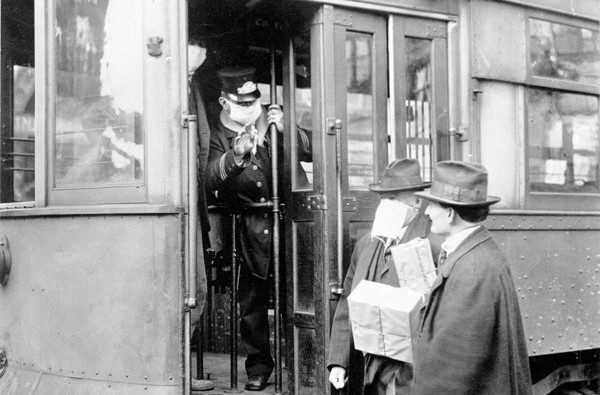As the fall season begins and the COVID-19 pandemic’s devastating grip on American society tightens, Virginia Tech professors look to history as a beacon.

“Despite all of the medical advances of the past century, beating today’s COVID-19 pandemic comes down to nearly the same challenge as the 1918 influenza epidemic,” said Ron Fricker, a senior associate dean in the College of Science and a professor of statistics. “Until we have a vaccine, it’s all about people modifying their behavior — wearing masks, washing their hands, and social distancing — to protect themselves and others.”
Fricker and E. Thomas Ewing, an associate dean in the College of Liberal Arts and Human Sciences and a professor of history, joined forces with Saint Louis University Professor Steve Rigdon to understand COVID-19 through the lens of the 1918 influenza pandemic.
Ewing provided statistics related to the 1918–1919 pandemic with Virginia as a case study, building on research led by his students earlier this year. Fricker and Rigdon offered insight into statistics and disease surveillance.
“The current pandemic resembles the 1918 influenza in several ways,” said Ewing, a leading expert on the history of influenza pandemics. “Those similarities include the sudden arrival of a widespread and deadly disease, the urgent implementation of public health measures, efforts to assess the impact of the disease by counting cases and deaths, and questions about the effectiveness of measures in containing the disease.”
Among the parallels between the pandemics, the researchers found both have disproportionately affected certain groups, including Black people.
“The reasons for this have to do with historical inequities in employment and medical care; disparities in comorbidities, such as diabetes, asthma, and hypertension; and other factors,” the researchers wrote. “As we move through this pandemic, we would do well to remember that these inequities from 100 years ago still exist today. We should work to eradicate them once and for all.”
To date, COVID-19 has killed more than 221,000 in the United States since the first reported case in January. Over the two-year course of the 1918 pandemic, an estimated 675,000 Americans died from influenza and pneumonia. Timing represents one key difference between the pandemics.
While the United States has yet to exit the first wave of COVID-19, the majority of deaths during the 1918 pandemic happened during a fall spike in cases and deaths. October to December represented the deadliest three months of the 1918 flu. In Virginia alone, 95 percent of all influenza deaths occurred in that three-month stretch, the researchers found.
“In the summer of 1918, the outbreak waned only to have it return even more strongly in the fall. We have already seen that loosening social distancing and other nonpharmaceutical interventions can lead to a resurgence of COVID-19,” said Fricker. “As we proceed through the fall, we would do well to keep the 1918 pandemic timeline in mind and be cautious about avoiding conditions that would lead to a large second wave.”
Today, health officials are encouraging Americans to prepare for an increase in COVID-19 cases as temperatures drop and more social activities move indoors. Already, in the first half of October, dozens of states are reporting rises in cases. Some estimates predict the death toll in the United States could surpass 400,000 by the end of the year.
In the study, the researchers noted how public health officials struggled to convince segments of the public to alter their behavior during the 1918 pandemic. In similar fashion today, many Americans have chosen to ignore COVID-19 guidelines, from wearing masks to practicing good hygiene and social distancing. Yet, since returning for the fall semester, the Virginia Tech community has demonstrated that following these guidelines can be effective, and public health students are actively engaged in outreach about the importance of following the guidelines.
Despite such early successes, Ewing, Rigdon and Fricker recommend caution: “An important lesson from 1918 is that we should not let our guard down too soon nor fall prey to the idea that just because we wish the pandemic would go away, it actually goes away,” they conclude. “Rather, it is critically important that we let our knowledge of history, science, and statistics and data guide us through the pandemic.”


